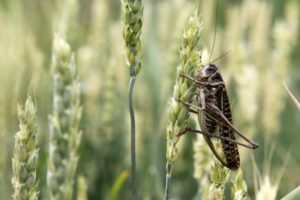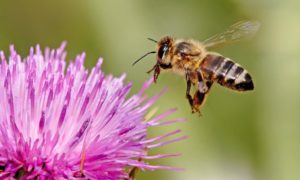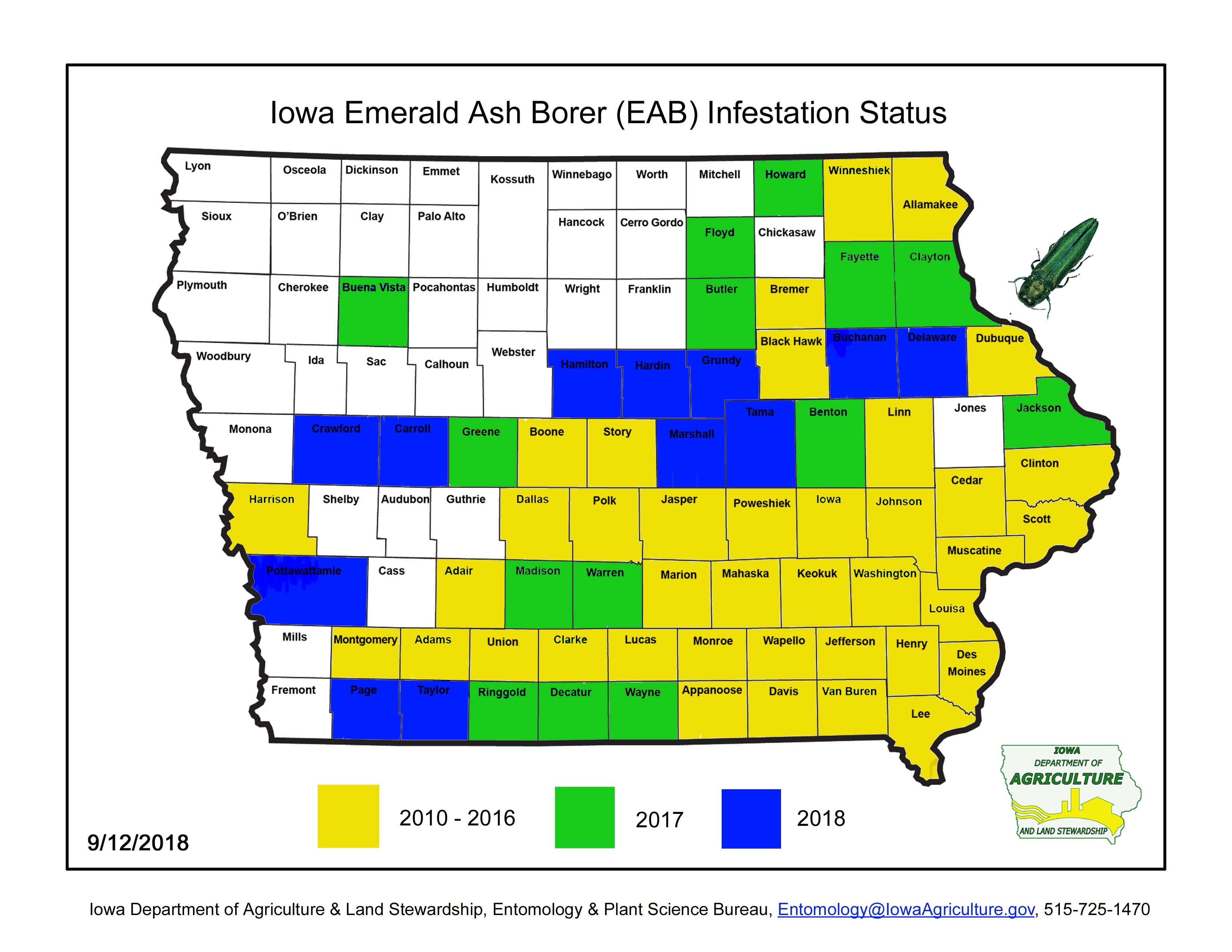Insects
Insects
Since the origins of agriculture, people have struggled to prevent insect pests such as grasshoppers, locusts, and crickets from damaging their crops. In Iowa during the Great Depression, locusts and grasshoppers were feared because when conditions allowed, their populations would explode. This often happens under severe drought because insect egg pods are very vulnerable to fungus in wet soils. During a Dust Bowl insect swarm in July 1931, insects in the air were said to be so thick that they blocked out the sun. Corn stocks would have been eaten completely bare and crops were decimated. Although there have not been any grasshopper swarms in the United States since early 1930s, insects continue to plague farmers.

Impacts to Agriculture
Insects can have a direct impact on agriculture as they chew the leaves of plants, suck out plant juices, bore into roots and stems, and spread plant pathogens. They also feed on natural fibers and accelerate the decay processes. Insects currently consume or destroy an estimated 5 to 20% of grain crops globally, with impacts and countermeasures in industrialized nations reaching approximately 10% of the Gross National Product.

Benefits
Even though they cause immense crop destruction, insects are also vital to the biogeochemical cycling of nutrients. Insects aerate the soil, which improves rainwater retention. They turn more soil than earthworms and redistribute nutrients as they burrow into the ground. Even parasitic insects are a part of a natural system of checks and balances that strengthens biodiversity. Some of these parasites are even imported into the United States where they kill weeds and other insects that we regard as pests. Insects also play an essential role as pollinators of flowering plants. For example, angiosperms are the dominant producer in many ecosystems, but cannot produce without insects to carry pollen from one flower to another. Many crops such as apples, blueberries, squash and melons would be non-productive without pollinators.

The Emerald Ash Borer
The Emerald Ash Borer is a small, green, invasive, wood-boring beetle that consumes ash tree foliage. The metallic green beetle is native to East Asia, and likely arrived within the wood of shipping crates from China. The larvae feed on the inner bark of ash trees which disrupt the tree’s ability to transport nutrients and water and eventually kills it. The Emerald Ash Borer was confirmed in Iowa in 2010. The Midwest, Pennsylvania, Virginia, and West Virginia are under a federal firewood transport quarantine, which bans the transport of firewood across state lines to limit further spread of the beetle.

Insects and Climate Change
Insect pests are likely to thrive in a warmer climate. The metabolism of insects increases in warmer environments, causing them must consume more calories to survive. But a warming climate will also make temperate zones like Iowa more hospitable to insects, enabling pests to reproduce at faster rates. Temperate regions are locations of the most agriculturally productive land on earth. As a result, recent research has estimated that agricultural losses from insects will increase by 10 to 25% for every 1 degree (Celsius) increase in temperature.
